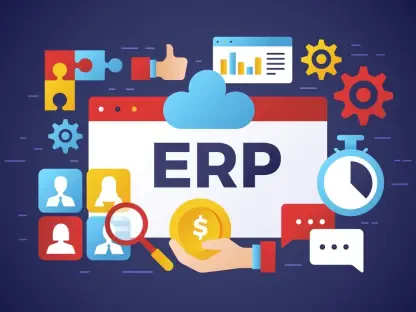Imagine a small business owner in 2025, juggling countless tasks while striving to grow a customer base in a fiercely competitive market, where every decision counts. With limited time and resources, choosing the right Customer Relationship Management (CRM) tool becomes a make-or-break decision for streamlining operations and driving sales. This scenario underscores the importance of selecting a platform that aligns with specific business needs. HubSpot CRM and Zoho CRM stand out as two prominent contenders in this space, each offering distinct approaches to managing sales, marketing, and customer service. This comparison dives deep into their features, costs, and usability to help businesses navigate this critical choice with clarity and confidence.
Key Feature Comparison
Pricing and Total Cost of Ownership
When evaluating HubSpot and Zoho, pricing emerges as a pivotal factor for businesses of all sizes. HubSpot offers a free plan for up to two users, packed with essential features, while its paid tiers start at $15 per user per month for the Starter plan and scale to $75 for Enterprise. Transparency is a hallmark of its model, with support and core tools bundled in, reducing unexpected expenses over time. This structure often translates to a lower total cost of ownership (TCO), even with a higher initial investment, as user feedback highlights fewer add-on costs.
In contrast, Zoho also provides a free plan for up to three users, with paid plans beginning at $20 per user per month and reaching $50 for the Enterprise level. However, its affordability can be deceptive due to additional fees for premium support, which may cost 20-30% of the license fee, and extras like AI integrations. Many users report that these hidden costs inflate the TCO, making long-term budgeting less predictable compared to HubSpot’s upfront clarity.
The disparity in cost structures suggests different value propositions. HubSpot tends to appeal to companies willing to invest more initially for sustained reliability and included services, whereas Zoho attracts budget-conscious firms that can absorb extra expenses over time. Analyzing user reviews reveals that businesses prioritizing cost certainty often lean toward HubSpot for its straightforward financial planning.
Usability and Onboarding Experience
Ease of use plays a significant role in how quickly a CRM can be adopted within a team. HubSpot shines with an intuitive interface and a single-platform design that simplifies navigation. Its guided tutorials and streamlined dashboard enable users to get up and running in days, with many reporting mastery of basic functions within a week. App store reviews frequently praise this accessibility, especially for non-technical staff who need minimal training.
Zoho, on the other hand, presents a steeper learning curve due to its complex ecosystem of over 50 separate products. While it offers extensive customization, onboarding often takes weeks, as users must navigate multiple applications and integrations. Even with video guides and a robust community, feedback indicates that less tech-savvy teams struggle with the initial setup, highlighting a gap in immediate usability compared to HubSpot.
This contrast in user experience affects deployment speed significantly. Businesses seeking rapid implementation with minimal disruption tend to favor HubSpot for its cohesive design. Zoho, while powerful for those comfortable with technical challenges, often requires more time investment upfront, which could delay operational benefits for some organizations.
Integrations and Ecosystem Compatibility
Seamless integration with other tools is crucial for maintaining efficient workflows across business systems. HubSpot excels in this area with an extensive marketplace boasting over 1,900 native integrations, connecting effortlessly with popular platforms like Slack and Gmail. This vast compatibility ensures smooth data flow, enhancing productivity for sales, marketing, and support teams without additional setup hassles.
Zoho offers connectivity within its own suite through Zoho One, but its external integrations are less expansive, often relying on third-party solutions like Zapier, which can introduce extra costs. User experiences point to a fragmented ecosystem where maintaining data consistency across its many products demands more effort, potentially disrupting team efficiency compared to HubSpot’s unified approach.
The impact of these differences on business operations is notable. Companies that depend on a wide array of external tools find HubSpot’s ecosystem more accommodating and less resource-intensive. Zoho, while flexible for in-house app users, may pose challenges for those needing broader connectivity, affecting how well data integrates across diverse systems.
Limitations and Challenges
Both HubSpot and Zoho come with certain drawbacks that businesses must weigh before committing. HubSpot’s free plan, while feature-rich, imposes a contact limit of 1,000, which can constrain growing firms. Additionally, accessing advanced functionalities often requires upgrading to higher-priced tiers, which might strain budgets for smaller entities looking for comprehensive tools without significant investment.
Zoho faces its own set of hurdles, particularly around performance and user experience at scale. As teams expand, some users report slowdowns and reliability issues, compounded by a fragmented interface across its numerous apps. Hidden costs for full functionality, such as premium support or AI features, further complicate adoption, often necessitating external consultants for smooth implementation.
These challenges highlight the importance of aligning CRM choice with operational capacity. HubSpot’s limitations are primarily cost-related, potentially impacting smaller budgets, while Zoho’s technical demands and scalability concerns could affect larger or less tech-savvy teams. Evaluating internal resources and growth projections becomes essential to mitigate disruptions during rollout and long-term use.
Final Verdict and Recommendations
Reflecting on the detailed comparison, distinct strengths and weaknesses emerge between HubSpot and Zoho across pricing, usability, integrations, and scalability. HubSpot stands out for its simplicity, transparent cost structure, and extensive native integrations, delivering long-term value through a cohesive platform. Zoho, conversely, offers affordability and deep customization, appealing to those with technical expertise willing to navigate its complexities.
For businesses moving forward, actionable steps include assessing specific needs against these insights. Small to medium-sized businesses requiring quick deployment and minimal training find HubSpot to be the ideal match, ensuring rapid impact on operations. Budget-conscious firms with in-house technical resources lean toward Zoho, leveraging its lower entry cost and flexibility for tailored solutions.
Looking ahead, considering scalability and integration demands proves vital. Companies anticipating growth or heavy reliance on external tools benefit from exploring HubSpot’s robust ecosystem further, while those prioritizing cost control can investigate Zoho’s suite with a clear plan for managing hidden expenses. Aligning these choices with strategic goals ensures that the selected CRM not only addresses current challenges but also supports future expansion.









